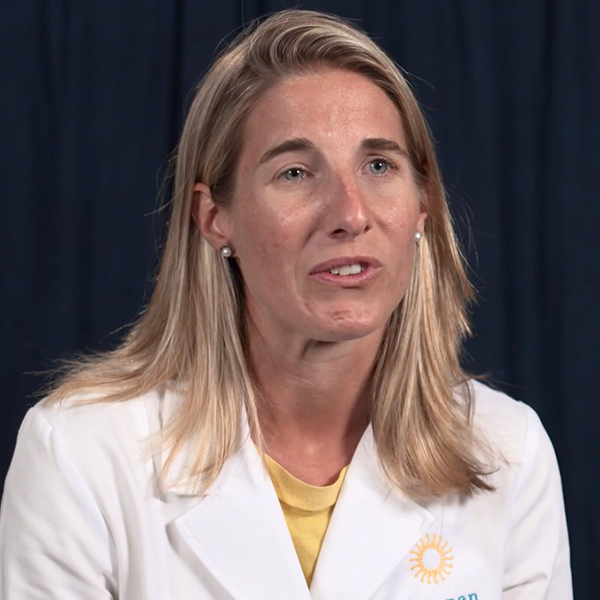The Importance of Women’s CV Health Programs: Three Physicians Examine Gender Disparity Gaps in Health Care Careers
As budding cardiologists, we are all aware that gender disparities exist in cardiovascular care. For decades, women have been underrepresented in clinical trials, misdiagnosed due to atypical symptoms, and are less likely to receive life-saving medications such as statins.
I wanted to explore why women's cardiovascular health programs are important, so I spoke with three physicians that have spent a large part of their careers focusing on women's cardiovascular health: Lori B. Croft, MD, FACC, associate professor of medicine and director of the echocardiography lab at Mount Sinai; Katharine French, MD, FACC, assistant professor of medicine and director of the women's cardiac center at Brown University; and Annabelle S. Volgman, MD, FACC, professor of medicine at Rush University Medical Center and medical director of the Rush Heart Center for Women.



What inspired you to do this?

"Too many women were dying of heart disease," Volgman explained.
In 1984, women were receiving hormone replacement therapy to treat hypercholesterolemia, whereas men were appropriately receiving statins. More women were dying of cardiovascular disease than men, which is what inspired her to set up the women's health center at Rush University.
French says she took over from Barbara H. Roberts, MD, FACC, the first female cardiologist in the state of Rhode Island who founded the Women's Cardiac Center at Brown. (As a side note, please visit Roberts's website and read more about her life – it is fascinating!)
Croft explained that by virtue of practicing in New York, she had to get involved in the cardiovascular care of pregnant women. Her patients are often women of higher maternal age, particularly those undergoing IVF.
Cardio Obstetrics
Screening Pregnant Women for Cardiovascular Disease
The consensus was to take a good pregnancy history! Work closely with OBGYN and maternal fetal medicine. For high-risk cases, involve a multidisciplinary team (cardiac anesthesia, high-risk OBGYN, etc.). Formulate a pregnancy and delivery plan with everyone's input early on.
Hypertension in Pregnancy
Historically, physicians have been apprehensive of treating pregnant patients with hypertension out of fear of harming the fetus; however, untreated hypertension can cause fetal growth retardation.
French and Croft emphasized that they have witnessed a change in the approach of the OBGYN community.
While in the past, physicians tended to be more conservative, the clear recommendation from the OBGYN community now is to prioritize the health of the mother while avoiding overt harm to the fetus – making it much easier to treat these women.

Croft often chooses Labetalol or Nifedipine. She rarely uses Methyldopa because it is sedating and not easily available. She tries to wean patients off over six weeks to six months post-delivery.
For those with persistent hypertension (12 – 18 months post-partum), Croft investigates for secondary causes.
She screens these patients for fibromuscular dysplasia (FMD) because there is a close correlation between pre-eclampsia and FMD.
Additionally, Croft counsels her patients to consider hormone-free IUDs because oral contraceptives cause hypertension. French waits for six months post-delivery to adjust antihypertensives and is comfortable using enalapril while patients are breastfeeding.
Do you Screen for Peripartum Cardiomyopathy?
None of the physicians routinely screen patients for peripartum cardiomyopathy. However, French believes peripartum cardiomyopathy is underdiagnosed and her approach is to obtain echocardiograms in pre-eclamptic patients with respiratory symptoms.
Similarly, Croft says she has a low threshold to perform a quick bedside echo to evaluate LV function if her patient has signs of pulmonary edema.
Good Resources to Learn From?
- Grand rounds, conferences and mentors.
- Annual Cardio Obstetrics Symposium led by Uri Elkayam, MD, FACC.
Primary Prevention and Screening
Volgman performs advanced lipid testing on asymptomatic patients that have a family history of premature coronary artery disease. She says that up to 60 percent of these patients have elevated lipoprotein A and she puts them on a statin.
Women with symptoms secondary to coronary microvascular disease are challenging. A combination of cardiac rehab and blood pressure and stress reduction is what helps them the most.
Important Lessons
French told me about a patient with an atrial septal defect and right ventricular dysfunction. She wanted to give birth at home and after much convincing, reluctantly agreed to deliver at the hospital. Post-delivery, however, she never returned for follow up.
The lesson that French learned from this was to always involve patients in the decision-making process and respect their views. They may not have lost the patient to follow up, she says, if they had come up with a middle-ground solution that was more acceptable to her.
Is There a Need for Women's Health Programs?

Volgman firmly believes that women's health programs are important. She started their program by networking with other health care professionals and businesswomen, and gave free lectures at events and corporate lunches.
Sixteen years later, the program consists of 12 female cardiologists, along with a geneticist and cardiac psychologist with a large pool of patients. They also offer free nutritional counselling once a week.
Patients benefit tremendously from this multidisciplinary approach.
Advice for fellows?
- Get involved in the management of pregnant women with cardiovascular disease during training.
- If you want to set up a women's health program, do it. It does not require a lot of funding and you do not need to ask for permission (courtesy Volgman!).
- You will learn on the go. Reach out to experts in the field – people are always willing to help.

